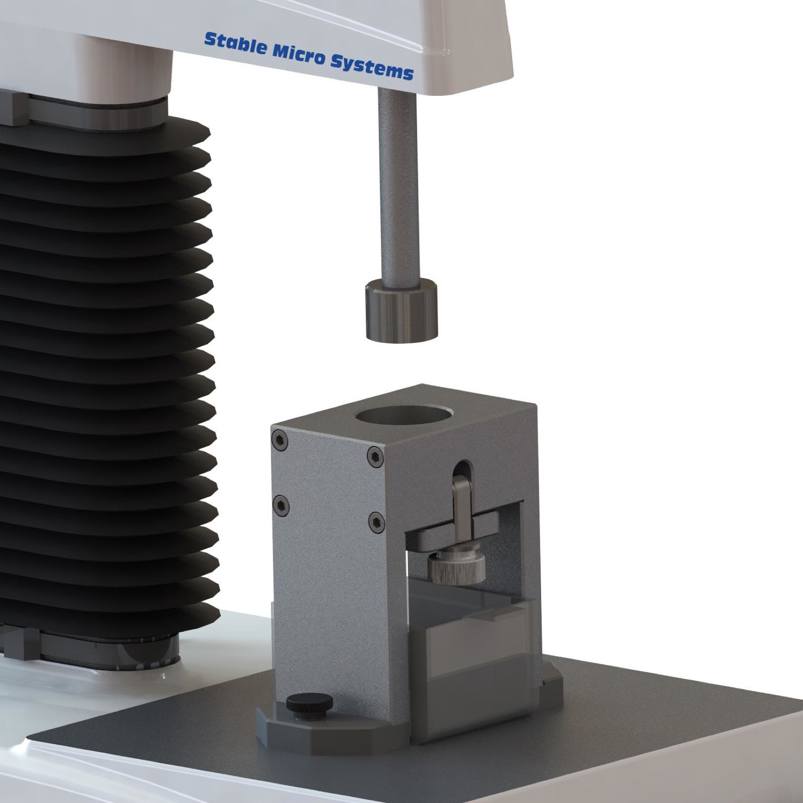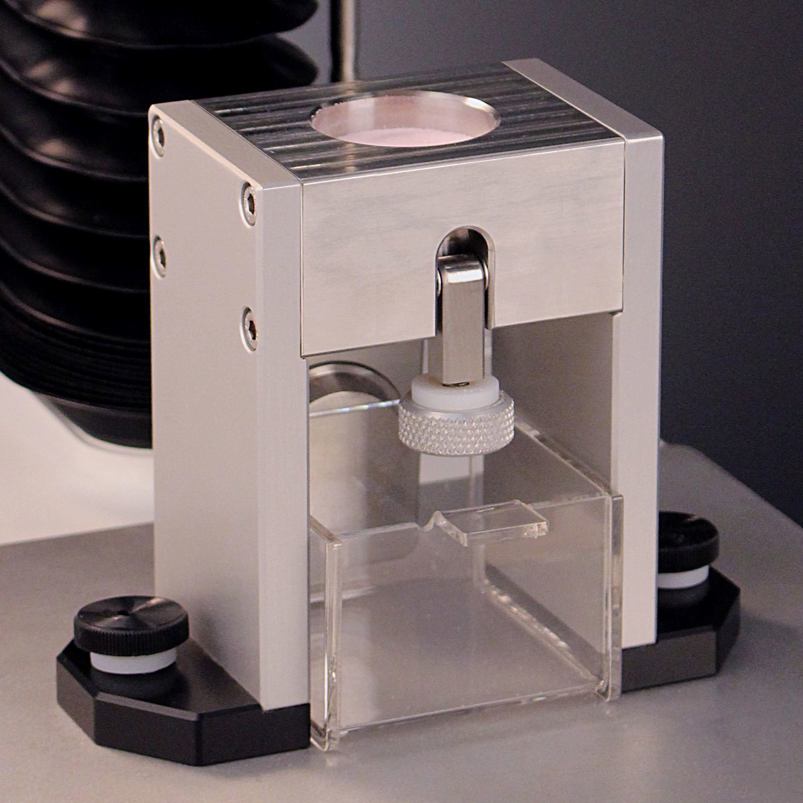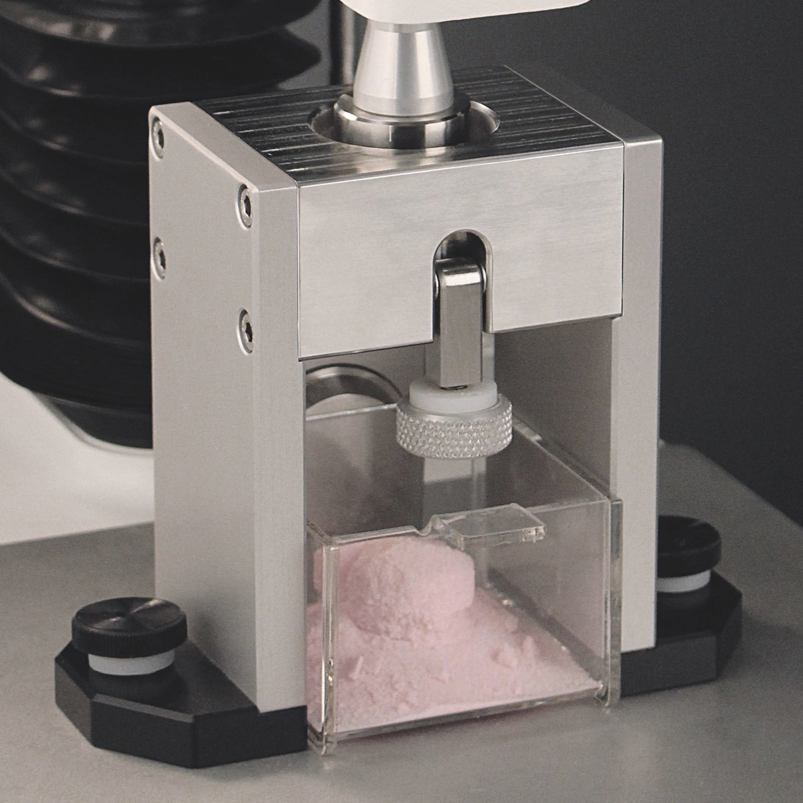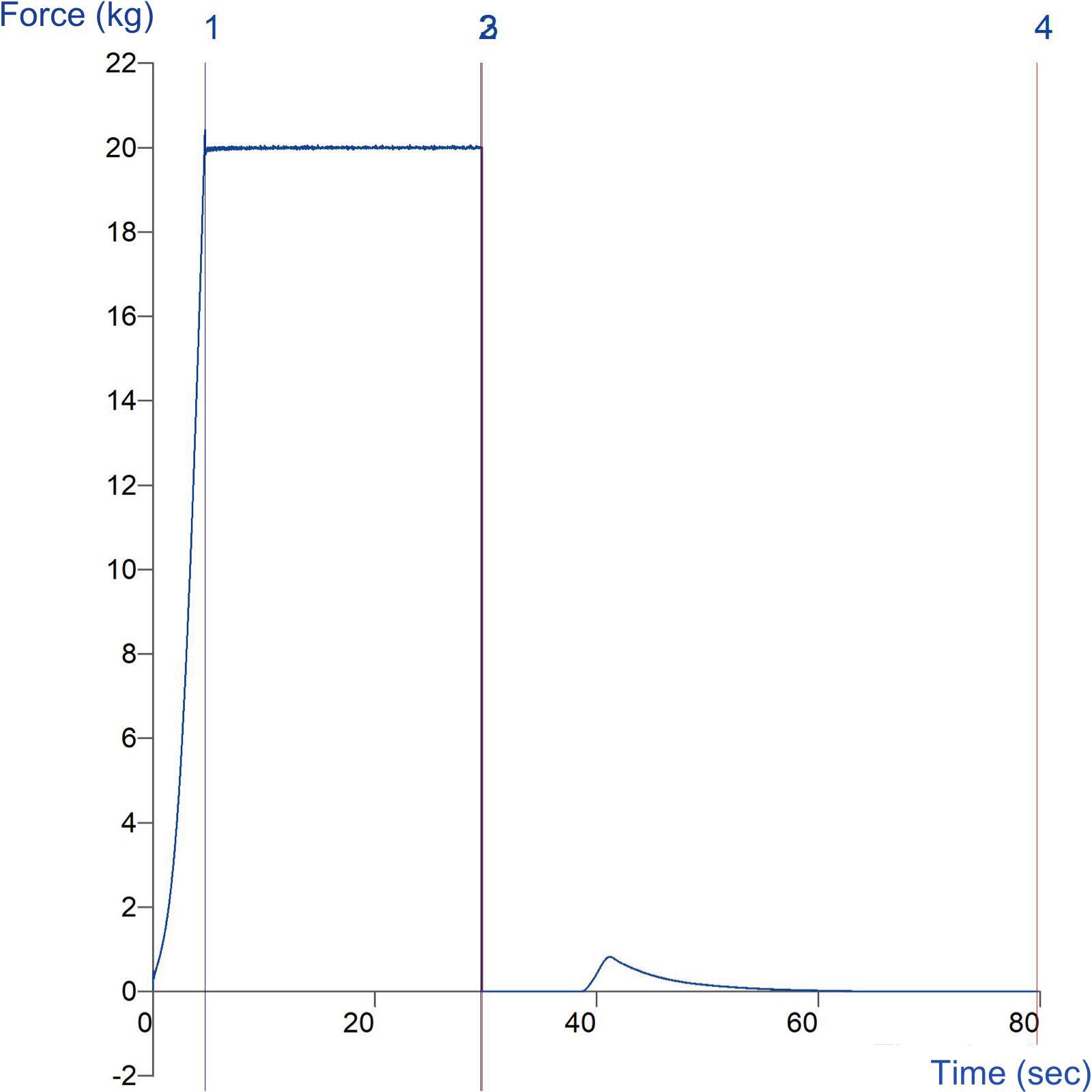Product overview
Anyone who has handled powders has almost certainly come across a clogged hopper, and will know that this is caused by caking, arching or rat-holing. To measure the tendency of a powder to show these properties, the main property to consider is the powder's bulk resistance to the initiation of flow. This helps to imitate the consolidation that occurs under the powder's own weight when the outlet is shut and the feeder is switched off. It is when the outlet is opened and the feeder started again that the blockages can build up.
The likelihood of a blockage forming depends on both the properties of the powder and the conditions surrounding it (humidity, temperature, stress state, hopper geometry). A vertical shear test provides a method to test the commencement of flow of a powder from a packed state, imitating a filled hopper. This test can also help to determine the correct hopper outlet size for reliable flow.
The Powder Vertical Shear Rig is yet another application that can be performed on powder samples using the Texture Analyser. During the test, a known mass of powder is transferred to the main body of the rig and compressed to a known force to create a uniform cake of powder. A trapdoor below the powder cake is released, exposing a circular surface of the cake. A probe slightly smaller than the hole then pushes a plug of the powder cake through the bottom of the rig. The powder is put into an almost perfect shear state (where the force is parallel with the powder movement). The rig offers a unique means of consolidating the powder, removing the applied force and testing the resulting sample without disruption by user handling. Using a special sequence and macro created in Exponent Connect software, which guides the user through the procedure, the important parameter of 'vertical shear strength' is automatically calculated once tests are complete.
How does the Powder Vertical Shear Rig work?
Ideal sample form
Powdered material.
Technical information
Installation
Full installation instructions are provided within the Education Zone of the latest Exponent/Connect software version and on the technical information sheet accompanying this product.
Chemical compatibility
Stable Micro Systems probes and attachments are commonly made from four materials: anodised aluminium (AA6082 T6), stainless steel (316 T), Delrin (acetyl copolymer) and Perspex (polycarbonate).
In general use, probes and attachments made from these materials will be suitable for testing food products and inert non-food materials.
The four materials listed above are not universally resistant to all types of chemicals and as such the compatibility of the probe/attachment material with the product (to be tested) must be established to prevent damage to the probes and attachments. If the compatibility of the product with the probe is unknown to the customer then the chemical information about the product (Material Safety Data Sheet or Product Data Sheet) should be submitted to Stable Micro Systems. Stable Micro Systems will then assess the suitability of the probe/attachment material for use with the product and advise accordingly. If this advice is not sought then Stable Micro Systems will not accept liability for probes/attachments damaged by chemical attack from the product being tested.
Cleaning and maintenance
All probes and attachments may be cleaned in warm (or hand hot) water using a mild detergent. A soft brush may be used but abrasive cleaning aids should be avoided. Stable Micro Systems products should not be microwaved or cleaned in a dishwasher.
Screw threads should be lightly lubricated after drying using a light lubricant, e.g. petroleum jelly, mineral oil. This will aid the fitting and unscrewing of the item. Each component of a probe or attachment should be wrapped separately when stored, to avoid scratching or chipping. This will safeguard against any unnecessary damage to the accessory.




